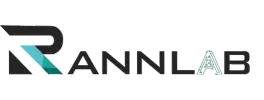A Continuous Integration and Continuous Deployment (CI/CD) pipeline is an automated process that enables developers to build, test, and deploy software efficiently. It serves as a structured workflow that ensures high-quality code delivery at a rapid pace while minimizing human intervention.
At RannLab, we understand that modern software development requires speed, agility, and accuracy. A well-structured CI/CD pipeline facilitates the seamless code transition from development to production, helping businesses stay ahead in an ever-evolving tech landscape.
How Does a CI/CD Pipeline Work?
A CI/CD pipeline consists of several interconnected stages designed to automate specific tasks within the software development lifecycle. These include:
1. Continuous Integration (CI)
- Developers push code changes to a shared repository frequently
- The code is automatically built and tested to detect integration issues early.
- Automated unit tests ensure that new code does not break existing functionality.
- The code is merged into the main branch only after all checks have been passed.
2. Continuous Delivery (CD)
- Approved code is packaged into deployable artifacts.
- Additional testing, including functional, performance, and security testing, is conducted.
- The application is staged for release, requiring minimal manual intervention.
3. Continuous Deployment (CD)
- The software is automatically deployed into production environments without manual approval.
- Real-time monitoring ensures system stability and performance.
- Any detected issues trigger rollback mechanisms to prevent service disruptions.
Read More: How to Build Your First AI Chatbot: A Step-by-Step Guide
Benefits of CI/CD Pipelines
Implementing a CI/CD pipeline can significantly improve software development and deployment. Here’s how:
- Faster Time-to-Market: Automated builds, tests, and deployments accelerate the release process.
- Higher Code Quality: Continuous testing ensures that only well-tested, reliable code reaches production.
- Reduced Manual Errors: Automation minimizes human intervention, reducing the risk of errors.
- Enhanced Collaboration: Developers, testers, and operations teams work together seamlessly.
- Scalability: CI/CD pipelines support cloud-native applications and containerized environments.
CI/CD Pipelines and DevOps
A CI/CD pipeline embodies DevOps principles by fostering collaboration between development and operations teams. The goal is to eliminate silos and streamline software delivery. DevOps and CI/CD work together to:
- Automate Manual Processes: Reducing human dependencies for building, testing, and deploying software.
- Improve Deployment Frequency: Ensuring rapid delivery of new features and updates.
- Increase Reliability: Offering quick rollback and monitoring capabilities for error detection.
- Ensure Security: Embedding security practices early in the pipeline (DevSecOps).
CI/CD Pipeline Components
A robust CI/CD pipeline consists of multiple tools and technologies tailored to different needs:
- Source Control Management: Git, GitHub, GitLab, Bitbucket
- CI/CD Tools: Jenkins, GitLab CI/CD, CircleCI, Travis CI
- Containerization: Docker, Kubernetes
- Testing Frameworks: Selenium, JUnit, TestNG
- Monitoring & Logging: Prometheus, ELK Stack, Grafana
Tekton: A Cloud-Native CI/CD Framework
One of the most advanced solutions for CI/CD pipelines is Tekton. As a Kubernetes-native framework, it allows developers to build cloud-native pipelines with:
- Custom Resource Definitions (CRDs) to create reusable components.
- Serverless Execution, reducing overhead costs.
- Seamless Integration with Knative, OpenShift, and other Kubernetes platforms.
Why Tekton?
At RannLab, we recommend Tekton for organizations leveraging Kubernetes-based infrastructure. Tekton’s flexibility, scalability, and compatibility with hybrid-cloud environments make it an ideal choice.
CI/CD Security Best Practices
Security is a critical aspect of any CI/CD pipeline. Without proper security measures, organizations risk exposing sensitive data and introducing vulnerabilities into production systems. Here’s how to secure your CI/CD pipeline:
- Implement Code Scanning & Static Analysis
- Use tools like SonarQube, Checkmarx, and Snyk to identify vulnerabilities early.
- Enforce Access Controls
- Restrict permissions and use Role-Based Access Control (RBAC).
- Use Secure Secrets Management
- Store sensitive credentials using Vault, AWS Secrets Manager, or Kubernetes Secrets.
- Monitor and Audit Logs
- Continuously track pipeline activities to detect anomalies.
- Adopt DevSecOps Practices
- Integrate security checks at every stage of development.
Red Hat OpenShift Pipelines: The Future of CI/CD
For organizations leveraging Red Hat OpenShift, OpenShift Pipelines provide a powerful Kubernetes-native CI/CD solution. Built on Tekton, it offers:
- Scalability: Independent scaling for each pipeline stage.
- Integrated Experience: Works seamlessly with OpenShift developer tools.
- Serverless Execution: No need for a central CI/CD server.
Why Choose Red Hat OpenShift for CI/CD?
- Enterprise-Grade Security: Built-in compliance and security mechanisms.
- Declarative Pipelines: Easy-to-maintain, version-controlled CI/CD workflows.
- Hybrid & Multi-Cloud Support: Deploy across public, private, and hybrid clouds.
RannLab’s Expertise in CI/CD Implementation
At RannLab, we specialize in helping businesses adopt and optimize CI/CD pipelines tailored to their unique requirements. Our services include:
- CI/CD Strategy Consulting
- Pipeline Design & Implementation
- Security & Compliance Audits
- Integration with DevOps & Cloud Platforms
- Ongoing Maintenance & Support
Read More: AI in ERP: Trends, Benefits, and Real-World Use Cases
Conclusion
The adoption of CI/CD pipelines is no longer an option but a necessity for organizations aiming to accelerate software delivery while ensuring quality and security. Businesses can stay ahead in the competitive software landscape by implementing automated, scalable, and secure pipelines.
Whether you’re just starting or looking to optimize your existing CI/CD practices, RannLab is here to help. Contact us today to revolutionize your software development process!

